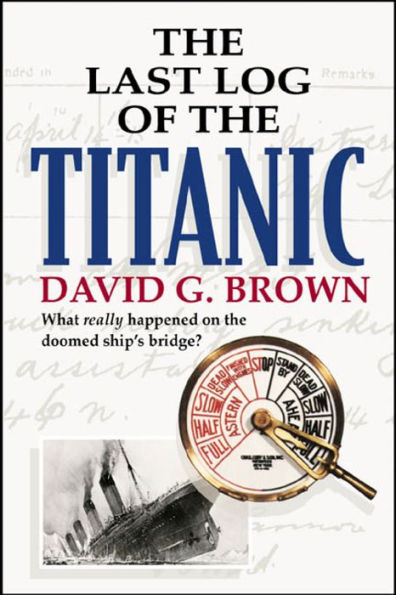Nearly nine decades after the event, the sinking of the Titanic continues to command more attention than any other twentieth-century catatrophe. Yet most of what is commonly believed about that fateful night in 1912 is, at best, a body of myth and legend nurtured by the ship's owners and surviving officers and kept alive by generations of authors and moviemakers. That, at least, is the thesis presented in this compellingly bold, thoroughly plausible contrarian reconstruction of the last hours of the pride of the White Star Line.
The new but no-less harrowing Titanic story that Captain David G. Brown unfolds is one involving a tragic chain of errors on the part of the well-meaning crew, the pernicious influence of the ship's haughty owner, who was aboard for the maiden trip, and a fatal overconfidence in the infallibility of early twentieth-century technology. Among the most startling facts to emerge are that the Titanic did not collide with an iceberg but instead ran aground on a submerged ice shelf, resulting in damage not to the ship's sides but to the bottom of her hull. First Officer Murdoch never gave the infamous CRASH STOP ("reverse engines") order; rather, he ordered ALL STOP, allowing him to execute a nearly successful S-curve maneuver around the berg. The iceberg did not materialize unheralded from an ice-free sea; the Titanic was likely steaming at 22 1/2 knots through scattered ice, with no extra lookouts posted, for two hours or more before the fatal encounter. Visibility was not poor that night, and the only signs of haze or distortion were those produced by the ice field itself as the Titanic approached. Most startling of all, however, is evidence that the ship might have stayed afloat long enough to permit the rescue of all passengers and crew if Captain Smith, at the behest of his employer, Bruce Ismay, had not given the order to resume steaming.
Offering a radically new interpretation of the facts surrounding the most famous shipwreck in history, The Last Log of the Titanic is certain to ignite a storm of controversy.
Nearly nine decades after the event, the sinking of the Titanic continues to command more attention than any other twentieth-century catatrophe. Yet most of what is commonly believed about that fateful night in 1912 is, at best, a body of myth and legend nurtured by the ship's owners and surviving officers and kept alive by generations of authors and moviemakers. That, at least, is the thesis presented in this compellingly bold, thoroughly plausible contrarian reconstruction of the last hours of the pride of the White Star Line.
The new but no-less harrowing Titanic story that Captain David G. Brown unfolds is one involving a tragic chain of errors on the part of the well-meaning crew, the pernicious influence of the ship's haughty owner, who was aboard for the maiden trip, and a fatal overconfidence in the infallibility of early twentieth-century technology. Among the most startling facts to emerge are that the Titanic did not collide with an iceberg but instead ran aground on a submerged ice shelf, resulting in damage not to the ship's sides but to the bottom of her hull. First Officer Murdoch never gave the infamous CRASH STOP ("reverse engines") order; rather, he ordered ALL STOP, allowing him to execute a nearly successful S-curve maneuver around the berg. The iceberg did not materialize unheralded from an ice-free sea; the Titanic was likely steaming at 22 1/2 knots through scattered ice, with no extra lookouts posted, for two hours or more before the fatal encounter. Visibility was not poor that night, and the only signs of haze or distortion were those produced by the ice field itself as the Titanic approached. Most startling of all, however, is evidence that the ship might have stayed afloat long enough to permit the rescue of all passengers and crew if Captain Smith, at the behest of his employer, Bruce Ismay, had not given the order to resume steaming.
Offering a radically new interpretation of the facts surrounding the most famous shipwreck in history, The Last Log of the Titanic is certain to ignite a storm of controversy.

The Last Log of the Titanic
234
The Last Log of the Titanic
234
Product Details
| ISBN-13: | 9780071374569 |
|---|---|
| Publisher: | McGraw Hill LLC |
| Publication date: | 11/05/2000 |
| Sold by: | Barnes & Noble |
| Format: | eBook |
| Pages: | 234 |
| Sales rank: | 998,871 |
| File size: | 899 KB |
